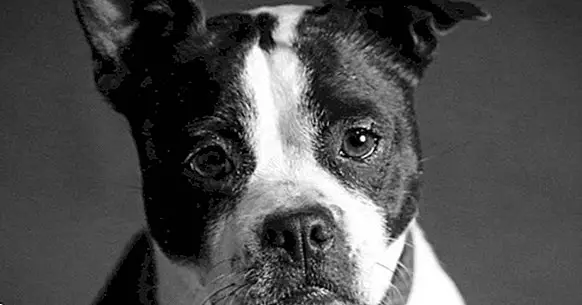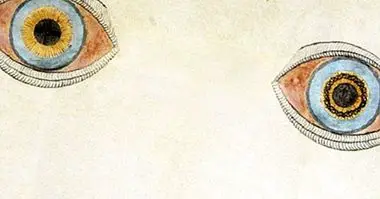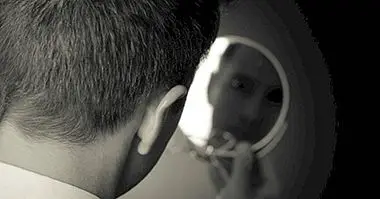Dog phobia (cynophobia): causes, symptoms and treatment
Dogs, along with cats, are one of the favorite pets for humans. They offer great company, they make themselves loved and, in some cases, they even serve as therapy. And is that those who have or have ever had a dog, we know that these animals end up being part of our family and may even become our best friends.
In fact, 74% of the Spanish population says that the presence of the dogs in their home makes them happier . This is what concludes scientist of the Affinity Foundation on the Link between People and Animals of Company. This study had 6,000 volunteers.
However, although these animals are very often adorable, some people suffer great panic and discomfort in their presence, and avoid being near them at all costs. This is known as cynophobia or dog phobia .
- Related article: "Types of phobias: exploring the disorders of fear"
Phobia to dogs, more common than we think
Almost 43% of Spanish families have pets in their home, and the dog is the favorite pet animal. According to the study by the Affinity Foundation, for 31% of subjects of your research, your dog is almost more important than your friends. Oddly enough, 71% say they communicate regularly with their pet.
That is why, for pet lovers, it is difficult to imagine that someone will feel terror in the presence of a dog. Now, cynophobia is more common than many people believe. According to the results of a study conducted by psychologist José Gil Martínez, professor at the University of Valencia, 10% of individuals suffer excessive and irrational fear of dogs . Not all of these people present this type of phobia, since this terror should be so intense that it would damage their quality of life, but considering that proportion, it is estimated that the number of people with cynophobia is relatively high.
- Maybe you're interested: "10 benefits of having a dog (according to science)"
Symptoms of cynophobia
People with dog phobia feel Extreme anxiety when they are near the animal or when they think about finding it .
The main symptoms they experience are panic and fear, an accelerated heartbeat, difficulty in breathing, tremors and a great need to flee or avoid the feared stimulus. Therefore, the symptomatology is not different from that of any specific phobia, but individuals with this type of phobia not only fear that a dog will harm them, but that they are also afraid of the panic response that accompanies an encounter with these animals.
Like other phobic disorders, cynophobia usually presents physical, cognitive and behavioral symptoms . They are the following:
- Disorientation and lack of concentration.
- Feeling of shortness of breath and hyperventilation.
- Excessive sweating
- Dry mouth.
- Intense terror
- Intestinal discomfort and headache.
- Tension in the muscles.
- Avoidance behavior
- Anguish.
- Accelerated heartbeat and increased heart rate.
How phobias develop
Most phobias have their beginning in childhood or adolescence , and the most frequent cause is the presence of a traumatic event that the person associates with a dog. From there, generalizes this fear to all animals of the species by a process called classical conditioning.
There are several scenarios that can cause the development of the phobia. A direct experience can be a dog bite . However, sometimes it is possible for a phobia to appear due to an irrational belief. For example, if a father repeats to a child that dogs are dangerous and that they attacked their grandfather in the past.
It can also happen that the person experiencing this phobia is not aware of its onset, for example, being caused by a slight incident when watching a horror movie with dogs or a feature film of rabies.
Some experts say there is a genetic predisposition to develop phobias. However, others, the vast majority, think that it is a phenomenon purely learned in the interaction with the environment , beyond that certain people have a greater predisposition to anxiety.
Treatment of cynophobia
Phobia is an anxiety disorder, and like other phobic disorders, it responds well to cognitive behavioral therapy. One of the most used techniques to deal with this problem are expository techniques, more specifically the method of systematic desensitization . This technique is designed to help eliminate fear gradually and encourage more useful coping skills.
As the therapeutic sessions progress, live dogs can be used, although in the initial stages photographs, audiovisual content, stuffed dogs and even exposure with imagination are usually used. Do not forget that dog phobia is an irrational fear and, generally, patients usually suffer phobic symptoms even if the animal is not present.
Overcoming it can be a slow process
When the person overcomes fear, he is encouraged to carry out positive behaviors such as approaching and petting a dog. Overcoming a phobia can be a slow process (in a matter of months) and getting it requires patience, effort and ability to overcome.
If the phobia is severe, the psychologist may work with a psychiatrist who prescribes drugs for the patient. Even though medicines should never be the only therapeutic option , can help reduce anxious symptoms significantly.
The cynophobia can create a huge discomfort, more taking into account that dogs are animals that coexist with humans and with which it is frequent to cross . Luckily, like any type of phobia, it can be overcome, although in most cases the anxiety it produces does not disappear completely.
Apps to help against anxiety
New technologies are also present in the treatment of phobias, and in recent years it has become possible to develop different apps that help overcome the pathology if you suffer.
Some expose you to the feared stimulus thanks to virtual reality or augmented reality, while others simply They provide information so you can better understand what is happening to you . If you want to know more about these applications, you can read this article: "8 apps to treat phobias and fears from your smartphone".



















